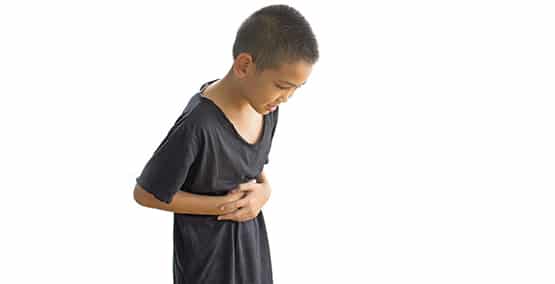
Do foods cause eosinophilic disorders?

Dr. Marcus is Medical Director of the South-East Eosinophilic Disease (SEED) Center (www.seedcenteratl.org).
Children (and adults) with eosinophilic esophagitis (EoE) often have trouble swallowing. They can even have food stuck in their esophagus or just poor or picky eating, abdominal pain, chest pain or vomiting, and as a result they can be thought to have acid reflux.
But these two conditions are quite different. In acid reflux, the esophagus is injured by acid coming up from the stomach. In EoE, on the other hand, the esophagus is injured by food and/or environmental allergies. These allergies trigger the immune system to mount an inflammatory response in the esophagus. That reaction leads to swelling of the esophagus and a patient's symptoms.
Just as eczema and asthma can be allergic conditions of the skin and lungs, EoE is an allergic condition of the esophagus. In fact, we often think of EoE as "eczema of the esophagus" and treat it with diet or medicines traditionally used for asthma. What's almost amazing is the rest of the gastrointestinal system is not involved.

Eosinophilic Gastritis and Gastroenteritis Are Different
While EoE seems to be increasing and is relatively common, Eosinophilic Gastritis and Eosinophilic Gastroenteritis are rare diseases where eosinophils (the type of white blood cell that is increased in allergic conditions), invade the lining of the stomach (gastritis) or the stomach and intestine (gastroenteritis). Amazingly, the esophagus is usually spared.
The eosinophils cause, or are indicators, of inflammation and injury. And that leads to the symptoms of abdominal pain, nausea, vomiting, diarrhea, weight loss or poor growth. Some patients may become anemic (low blood counts), feel tired and aren't able to perform well at school or participate in their activities. Other patients may present with malnutrition and have low protein and vitamin levels.
The adults and children with this disease may also have environmental and/or food allergies, and it's possible that food allergies in particular may have an important role in triggering the disease and making it harder to treat.
As a result, when these problems are a possibility, patients often need to undergo a battery of blood tests, allergy studies, and upper endoscopy and sometimes a colonoscopy as well. Tiny pinches (biopsies) from the lining of the esophagus, stomach and intestine are examined under a microscope to look for inflammation and the presence of eosinophils.
If either eosinophilic gastritis or gastroenteritis is found, treatment focuses on dietary therapy often in combination with medications to lessen the inflammation, protect the stomach and intestine and reverse nutrient losses.
A team of doctors (an allergist and pediatric gastroenterologist) a dietitian and occasionally a psychologist will sometimes work together to determine and maintain the best diet, avoid nutrient deficiencies and return your child to a normal life.
Additional Information
Support networks and resources are available for families affected by Eosinophilic Gastrointestinal Disease (EGID). The SEED Center of Atlanta, Inc (www.seedcenteratl.org), The American Partnership for Eosinophilic Disorders (www.apfed.org), the North American Society for Pediatric Gastroenterology, Hepatology and Nutrition (www.naspghan.org), the Food Allergy and Anaphylaxis Network (www.foodallergy.org), and GAeos.org (www.gaeos.org) can help you understand these conditions and guide you to available support and resources that will help your child and family thrive.
Subscribe Be the first to know




